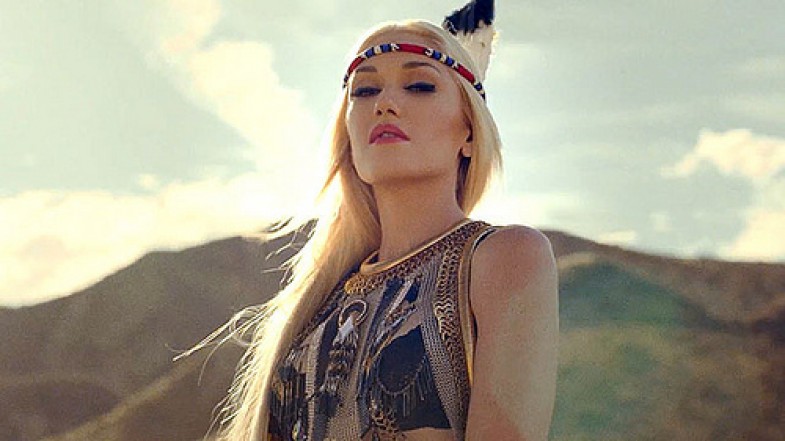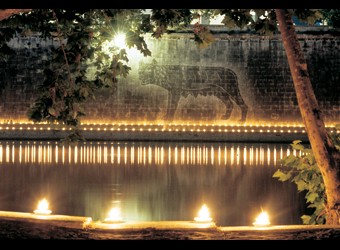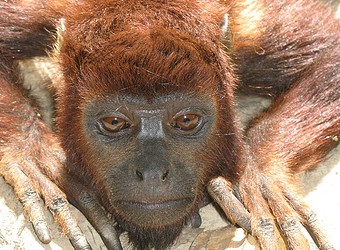There is something insidiously ironic about being American Indian during the fall of the 21st century. It all starts with Columbus Day to mark our “discovery,” then moves right into the “it’s totally not racist to dress up as a hypersexualized Indian” for Halloween parties, and goes out with a bang on Thanksgiving when we celebrate the survival of the Pilgrims and that harmonious, mutually beneficial relationship forged between colonizers and Indigenous peoples everywhere! However romanticized or factually inaccurate, these holidays happen to be the three days when Native peoples actually enter the mass psyche of American culture.
I don’t know about you, but I usually spend the autumn months parading around in my Navajo Hipster panties, feather headdress (on loan from model Karlie Kloss and singer Gwen Stefani), Manifest Destiny T-Shirt and knee-high fringed moccasins made in Taiwan while watching a Redskins game, smoking a pack of American Spirits, and eating genetically modified Butter Ball turkey, because I’m just that traditional.
Perhaps it was that warm Indian summer weather that seemingly made non-natives so eager to sport culturally demeaning faux Indian apparel and legitimize it under the guise of “ignorance” or “appreciation.” Maybe it’s totally cool to be an oblivious racist these days. Whatever the case, there have been unusually high rates of “playing Indian” this year.
A lot of the recent coverage and commentary on cultural appropriation has emphasized the lack of education surrounding Native history and a greater need for sensitivity toward Native culture. While I certainly agree that invisibility continues to shroud Native issues and that there is a tremendous lack of education when it comes to the history of America’s Indigenous peoples, I think that the issue of why these circumstances exist is often overlooked. Why are Americans so clueless when it comes to the history and contemporary reality of Native peoples? What is it about this particular narrative that threatens the collective American psyche?
To be honest, while angered and outraged, I am not shocked about the most recent occurrences of Native cultural appropriation and denigration. Racism, dehumanization, and intellectual-property theft are not new to Native Americans. We have been confronting them in some form or another beginning with the Doctrine of Discovery and the arrival of Columbus in 1492. Imperialism and the genocide of Indigenous people have been justified under the premise of progress and growth and in the process our lands, cultures, and bodies have all been portrayed as inherently violable.
The sexual conquest and deliberate dehumanization of Native women has been used as a colonizing tactic for centuries. Sexual violence perpetrated against Native women was a strategy of domination used in the Indian Wars and as we can see, this type of mentality of domination persists today. Native women, stripped of their humanity, are still objectified as a sexual fetish or exotic other. In fact, these kind of derogatory stereotypes have become a fixture of both American mythology and pop culture. What is different today is that, in the digital age of Instagram and Twitter, you can see a picture of Karlie Kloss donning a feather headdress on your iPhone the moment she starts strutting the runway.
Recent acts of cultural appropriation do not occur in a vacuum and should not be viewed as isolated instances separate from their social and historic contexts. It is far more complex than hipsters in Navajo panties and pop stars in headdresses. These contemporary instances of cultural appropriation and stereotypes are really byproducts of ongoing colonialism, systemic racism, and the deliberately false narratives perpetuated about Native peoples by white society. Cultural commodification and dehumanized stereotypes extended far beyond any single corporation, retail franchise, or celebrity.
Despite what dominant society and mainstream media say, Native culture is a vibrant and living culture. We are not a relic of the past, a theme or a trend; we are not a style or costume; we are not mascots, noble savages or romantic fictional entities. We are human beings and, despite all odds, we have survived. As sovereign Nations, Indigenous peoples have the right to speak for ourselves and not have dominant Euro-American society project and profit from an artificial and socially constructed image of “Indian” identity.
November has been declared Native American Heritage month, and I think next year would be an opportune time for corporate executives and members of the fashion and music industries to come visit Indian country and actually meet some of the people they are attempting to mimic. There are 565 federally recognized tribes in the United States, each with their own distinct culture, language, and history, and each with multitude of artists who could teach them a lot about beauty and dignity. Gwen, Karlie, Ke$ha and all you other culture vultures, maybe you should leave your synthetic headdresses at home. And by the way, I am sorry if any of you are offended by me calling you out for being offensive.






